The Tiger’s Wife
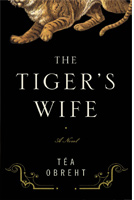 The Tiger’s Wife is an interlocking series of fabulist tales, set in an unnamed Balkan country that is obviously Yugoslavia before and after its dissolution into ethnic political states, which unfolds the life and death of the narrator’s grandfather. It’s a meditation on grief, cultural blindness and bigotry, among other things, but overarchingly the constant effort to try to live a decent life and see the decency in others, even those who seemingly don’t possess it. Written by Téa Obreht, whom The New Yorker named one of the twenty best American fiction writers under forty and the National Book Foundation’s “5 Under 35” list, it is, as you might expect given those accolades, considered a “literary” novel. Which is perhaps why you haven’t seen much mention of it in genre circles, despite the fact that it is a fantasy. However you want to classify it, it’s good and well-deserving of the hype it’s received. One thing that struck me that I don’t think I’ve seen mentioned is the similarity between Obreht and Ray Bradbury in his prime, back in the days when Clifton Fadiman was trying to sell The Martian Chronicles to the literary mainstream.
The Tiger’s Wife is an interlocking series of fabulist tales, set in an unnamed Balkan country that is obviously Yugoslavia before and after its dissolution into ethnic political states, which unfolds the life and death of the narrator’s grandfather. It’s a meditation on grief, cultural blindness and bigotry, among other things, but overarchingly the constant effort to try to live a decent life and see the decency in others, even those who seemingly don’t possess it. Written by Téa Obreht, whom The New Yorker named one of the twenty best American fiction writers under forty and the National Book Foundation’s “5 Under 35” list, it is, as you might expect given those accolades, considered a “literary” novel. Which is perhaps why you haven’t seen much mention of it in genre circles, despite the fact that it is a fantasy. However you want to classify it, it’s good and well-deserving of the hype it’s received. One thing that struck me that I don’t think I’ve seen mentioned is the similarity between Obreht and Ray Bradbury in his prime, back in the days when Clifton Fadiman was trying to sell The Martian Chronicles to the literary mainstream.
I have to say that Obreht is the better writer, more in control of her fabricated folklore and less inclined to Bradburian whimsy, as well as much darker. Which is maybe why she is “literary.” But, just for fun, here’s a test. Which of these passages is written by Obreht, and which by Bradbury? (All winners receive absolutely nothing besides smug self-satisfaction.)
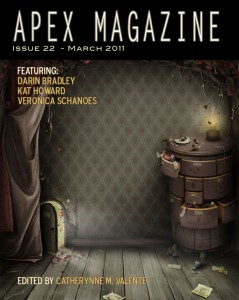 Apex Magazine is a monthly on-line publication of science fiction, fantasy and horror edited by Catherynne M. Valente.
Apex Magazine is a monthly on-line publication of science fiction, fantasy and horror edited by Catherynne M. Valente. The June-July 2011
The June-July 2011  The June 20th edition of John Clute’s
The June 20th edition of John Clute’s 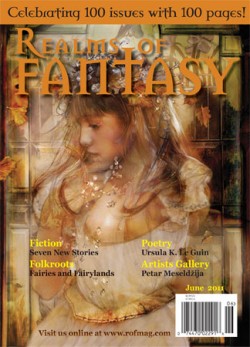 Congratulations to Realms of Fantasy on its 100th issue (which actually has 101 pages, but I guess the extra page is for good luck, and doesn’t make for quite the same alliterative headline), a notable accomplishment for a publication that has been brought back from the dead on several occasions. In fact, the magazine has had five publishers, with founding editor Shawna McCarthy the only person who has been there for the duration, according to the issue’s “Little Known Facts.” Fiction contributors include Leah Bobet, Josh Rountree and Samantha Henderson, Sharon Mock, Thea Hutchinson, Patrick Samphire, Euan Harvey and David D. Levine, as well as poetry by Ursula Le Guin and various art, book, gaming and movie reviews along with the regular Folkroots column by Theodora Gass. Here’s the complete
Congratulations to Realms of Fantasy on its 100th issue (which actually has 101 pages, but I guess the extra page is for good luck, and doesn’t make for quite the same alliterative headline), a notable accomplishment for a publication that has been brought back from the dead on several occasions. In fact, the magazine has had five publishers, with founding editor Shawna McCarthy the only person who has been there for the duration, according to the issue’s “Little Known Facts.” Fiction contributors include Leah Bobet, Josh Rountree and Samantha Henderson, Sharon Mock, Thea Hutchinson, Patrick Samphire, Euan Harvey and David D. Levine, as well as poetry by Ursula Le Guin and various art, book, gaming and movie reviews along with the regular Folkroots column by Theodora Gass. Here’s the complete  Tastemaker Central take particular pleasure in noting that the latter literary bastion has much of interest to the same people who read the bastion of fantasy genre tales (and perhaps vice versa?). The Summer 2011 features “Art of Fiction” interviews with Samuel R. Delany and William Gibson, as well as a story by Jonathan Lethem, “The Empty Room,” that’s available
Tastemaker Central take particular pleasure in noting that the latter literary bastion has much of interest to the same people who read the bastion of fantasy genre tales (and perhaps vice versa?). The Summer 2011 features “Art of Fiction” interviews with Samuel R. Delany and William Gibson, as well as a story by Jonathan Lethem, “The Empty Room,” that’s available  I’m beginning to wonder when Interzone will be retitled Jason Sanford’s Interzone; the guy seems to snag the magazine’s featured author slot more times than most. Case in point is the May/June issue in which Sanford’s “Her Scientification, Far Future, Medieval Fantasy” gets top billing, “plus other new stories” by Suzanne Palmer, Lavie Tidhar, Will McIntosh and Jon Ingold. I normally find Sanford intriguing, but this is one of those “I’m in an artificial reality, and I find out that I’m not as real (or more than real) as I thought” stories that is okay but doesn’t add much to the trope that hasn’t already been done before. The first paragraph is a real hoot, though, which I felt the rest of the story didn’t really hold up to:
I’m beginning to wonder when Interzone will be retitled Jason Sanford’s Interzone; the guy seems to snag the magazine’s featured author slot more times than most. Case in point is the May/June issue in which Sanford’s “Her Scientification, Far Future, Medieval Fantasy” gets top billing, “plus other new stories” by Suzanne Palmer, Lavie Tidhar, Will McIntosh and Jon Ingold. I normally find Sanford intriguing, but this is one of those “I’m in an artificial reality, and I find out that I’m not as real (or more than real) as I thought” stories that is okay but doesn’t add much to the trope that hasn’t already been done before. The first paragraph is a real hoot, though, which I felt the rest of the story didn’t really hold up to: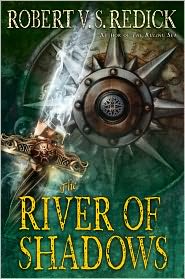 The River of Shadows (Book III of the Chathrand Voyage Series)
The River of Shadows (Book III of the Chathrand Voyage Series)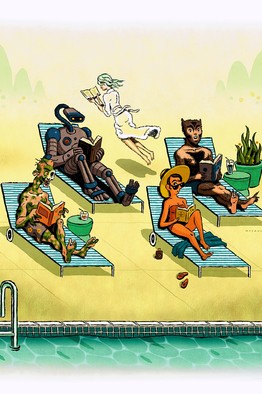 The Wall Street Journal weighs in on the
The Wall Street Journal weighs in on the  No doubt somewhere someone is writing a vampire series based on Hamlet (there is, alas, a
No doubt somewhere someone is writing a vampire series based on Hamlet (there is, alas, a 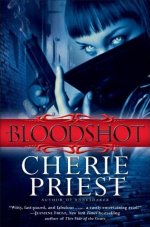 The second is Cherie Priest’s kickoff of an “urban fantasy” (a term which I take to mean “vampires who live and suck blood in cities”) called
The second is Cherie Priest’s kickoff of an “urban fantasy” (a term which I take to mean “vampires who live and suck blood in cities”) called  I’ve sometimes bought a book without knowing anything about it because it had a cool cover. Similarly, I’ve been drawn to read a story because of a cool title.
I’ve sometimes bought a book without knowing anything about it because it had a cool cover. Similarly, I’ve been drawn to read a story because of a cool title.